What is the Difference Between Toner and Serum?
The main difference between toner and serum lies in their formulation, purpose, and the stage of the skincare routine in which they are typically used. Here are the key distinctions:
Toner:
- Formulation: Toner is usually a water-based liquid that may contain additional ingredients like hydrating agents, antioxidants, or botanical extracts. It is often alcohol-free but can contain a small amount of alcohol.
- Purpose: Toner is primarily used to balance the skin's pH level, remove any residual impurities after cleansing, and prepare the skin for better absorption of subsequent skincare products. It provides a refreshing and invigorating sensation and can offer additional benefits like hydration, soothing, or pore-tightening.
- Application: Toner is typically applied by pouring a small amount onto a cotton pad or ball and gently sweeping it over the face and neck. It can also come in spray or mist form for direct application onto the skin.
Serum:
- Formulation: Serum is a lightweight, often gel-like or liquid-based product that contains a high concentration of active ingredients, such as vitamins, antioxidants, peptides, or specialized compounds. It is formulated to address specific skin concerns, such as anti-aging, brightening, or hydration.
- Purpose: Serum is designed to penetrate deeply into the skin and deliver a potent dose of targeted ingredients to address specific skincare needs. It provides intense hydration, nourishment, and treatment for specific concerns like fine lines, wrinkles, dark spots, or uneven texture.
- Application: Serum is applied after cleansing and toning, but before moisturizing. A small amount is typically massaged onto the face and neck, allowing it to absorb fully before proceeding with the next step of the skincare routine.
In summary, toner focuses on balancing pH, removing impurities, and preparing the skin, while serum delivers concentrated active ingredients to target specific skin concerns and provide intensive treatment and nourishment. They serve different purposes within a skincare routine, and both can be used together for optimal results.
Remember to choose a toner that suits your skin type and concerns to maximize its benefits.
Best Toner For Face
1. Recode Glycolic Acid Toner
The Glycolic Acid Toner for Glowing Skin by Recode Studios is designed to promote a radiant and revitalized complexion. This toner features glycolic acid as its key active ingredient. Glycolic acid is an alpha-hydroxy acid (AHA) known for its exfoliating properties and ability to improve skin texture.
This toner aims to provide multiple benefits for the skin. The glycolic acid helps to gently exfoliate the skin, sloughing off dead skin cells and promoting cell turnover. This process can lead to a smoother and more refined skin texture, minimizing the appearance of pores and fine lines.
2. Recode Watermelon Pore Tightening Toner
The Recode Watermelon Pore-Tightening Toner is specially formulated to help tighten and refine the appearance of pores while providing hydration and refreshing benefits. This toner features watermelon extract as its key ingredient, known for its soothing and hydrating properties.
The toner aims to provide multiple benefits for the skin. Watermelon extract helps to hydrate the skin, promoting a plump and moisturized complexion. It also contains antioxidants that can help protect the skin from environmental stressors and free radicals.
One of the main highlights of this toner is its pore-tightening properties. It is formulated to help minimize the appearance of pores, giving the skin a smoother and more refined look. This can contribute to a more even skin texture and improved overall complexion.
Best Face Serum
1. Recode Face Serum For Glowing Skin
The Glowing skin face serum is a specific serum product offered by Recode Studios. Although the specific details of this product are not available to me as it appears to be a specific offering from Recode Studios, I can provide a general description of what a face serum typically offers:
Face serums, in general, are lightweight and highly concentrated skincare products designed to deliver potent active ingredients to the skin. They are formulated to target specific skin concerns and provide intensive treatment and nourishment.
The Glow Face Serum likely aims to promote a radiant and glowing complexion. It may contain a combination of beneficial ingredients such as vitamins, antioxidants, peptides, botanical extracts, and specialized compounds, depending on its specific formulation.
2. Recode Anti-Aging Face Serum
The Anti-Aging Face Serum is a specific serum product offered by Recode Studios. While I don't have access to the specific details of this product, I can provide a general description of what an anti-aging face serum typically offers:
An anti-aging face serum is designed to target and address common signs of aging in the skin, such as fine lines, wrinkles, loss of elasticity, and uneven texture. These serums often contain a combination of potent active ingredients that work together to promote a more youthful and rejuvenated appearance.
What Is Toner?
Toner is a product used in skincare and beauty routines, specifically in the context of facial care. It is a liquid solution that is applied to the skin after cleansing and before moisturizing.
Toner is typically water-based and contains active ingredients that provide various benefits to the skin. These ingredients can include hydrating agents, such as hyaluronic acid or glycerin, as well as antioxidants, vitamins, and botanical extracts. Toner can also contain exfoliating agents like alpha-hydroxy acids (AHAs) or beta-hydroxy acids (BHAs) to help remove dead skin cells and promote a smoother complexion.
The main purpose of using a toner is to balance the skin's pH level, which can be disrupted by the alkaline nature of some cleansers. Toner helps restore the skin's natural pH, which is slightly acidic, and prepares it to better absorb subsequent skincare products. Additionally, toner can help remove any residual dirt, oil, or makeup that may have been left behind after cleansing.
Applying toner involves pouring a small amount onto a cotton pad or ball and gently sweeping it over the face and neck. Some toners come in spray or mist form and can be sprayed directly onto the skin.
While toners are not essential in a skincare routine, many people find them beneficial for refreshing and prepping the skin before applying serums, moisturizers, or other treatments. It's important to choose a toner that suits your skin type and concerns to maximize its benefits.
Benefits of Toner
Here are the benefits of using toner, presented in bullet points:
- Balances pH levels
- Cleanses and purifies the skin
- Tightens and minimizes pores
- Hydrates and moisturizes
- Refreshes and revitalizes
- Enhances absorption of skincare products
- Provides antioxidant and nourishing benefits
- Exfoliates and promotes cell turnover
- Soothes and calms the skin
How and When to Use Toner?
Toner is typically used in skincare routines after cleansing the face and before applying serums, moisturizers, or other treatment products. Here are some guidelines on how and when to use toner effectively:
- Choose the right toner: There are various types of toners available, including hydrating toners, exfoliating toners, and pH-balancing toners. Select a toner that suits your skin type and addresses your specific concerns. For example, if you have dry skin, opt for a hydrating toner, while oily or acne-prone skin may benefit from an exfoliating toner.
- Cleanse your face: Start by cleansing your face using a gentle cleanser to remove dirt, oil, and impurities. Thoroughly rinse off the cleanser and pat your face dry with a clean towel.
- Apply toner: Pour a small amount of toner onto a cotton pad or into your hands. Gently swipe the cotton pad over your face, or pat the toner onto your skin with your hands. Start from the center of your face and work outward, covering the entire face and neck.
- Be gentle: When applying toner, use gentle upward motions to avoid pulling or stretching the skin. Avoid harsh rubbing, as it can cause irritation.
- Focus on problem areas: If you have specific areas of concern, such as excess oiliness or enlarged pores, you can pay extra attention to those areas while applying toner. Lightly press the cotton pad soaked in toner onto these areas to help balance the skin.
- Allow absorption: Let the toner absorb into the skin for a few seconds to a minute before moving on to the next step in your skincare routine. This allows the toner to balance the pH of the skin and prepare it for the subsequent products.
- Follow with other products: Once the toner has absorbed, continue with the rest of your skincare routine. Apply serums, moisturizers, or any other treatment products you use.
- Frequency of use: The frequency of toner usage can vary depending on your skin type and the specific toner you're using. Some toners can be used twice daily, while others may be recommended for once a day or every other day. Follow the instructions on the product label or consult with a dermatologist for personalized recommendations.
It's important to note that toners should not be used as a substitute for cleansing the skin. They are meant to be used after cleansing to help balance the skin's pH, remove any residual impurities, and prepare the skin for better absorption of subsequent skincare products.
What is Face Serum?
A face serum is a skincare product that is formulated with a high concentration of active ingredients. It is designed to address specific skin concerns and provide targeted benefits. Face serums typically have a lightweight, gel-like, or watery texture, allowing them to penetrate deeply into the skin and deliver their potent ingredients.
Benefits of Face Serum
Here is a concise list of benefits of using a face serum:
- Deep hydration
- Targeted treatment for specific skin concerns
- Enhanced nourishment
- Brightening and even skin tone
- Boosts collagen production
- Smoother texture
- Fast absorption
- Layering compatibility with other skincare products
- Customizable and adaptable to individual needs
How and When to Use Serum?
To get the most out of your face serum, it's important to use it correctly and incorporate it into your skincare routine in the appropriate order. Here's a guide on how and when to use serum:
- Cleanse your face: Start by cleansing your face using a gentle cleanser to remove any dirt, oil, or impurities.
- Tone (optional): If you use a toner, apply it after cleansing and before applying the serum. This step helps balance your skin's pH level and prepares it for better absorption of the serum.
- Apply the serum: Take a small amount of serum onto your fingertips or palm, and gently press or massage it onto your face and neck. Start with a pea-sized amount and adjust as needed, depending on the consistency and instructions provided by the specific serum you're using.
- Give it time to absorb: Allow the serum to absorb into your skin for a few minutes before proceeding to the next step. This allows the active ingredients to penetrate deeply into your skin.
- Follow with moisturizer: After the serum has fully absorbed, apply your moisturizer to lock in the serum's benefits and provide additional hydration to your skin. The moisturizer acts as a barrier, preventing moisture loss and sealing in the serum's nutrients.
- Sunscreen during the day: If you're applying serum during the daytime, it's essential to follow up with a broad-spectrum sunscreen with at least SPF 30. This helps protect your skin from harmful UV rays and prevents potential sun damage.
Additional tips:
- Start with a clean and dry face to ensure maximum absorption of the serum.
- Use serums that target specific concerns or goals you have for your skin, such as anti-aging, brightening, or hydration.
- Follow the instructions provided by the serum manufacturer, as some serums may have specific usage recommendations or frequency.
- Serums are typically applied twice a day, once in the morning and once in the evening, but check the product instructions for any specific guidelines.
- Consider incorporating a patch test before using a new serum to ensure compatibility and to check for any adverse reactions.
Remember, every individual's skin is unique, so it's important to listen to your skin's needs and adjust your skincare routine accordingly.

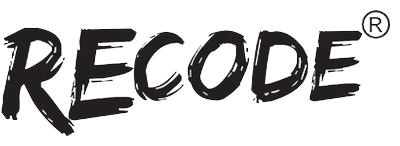
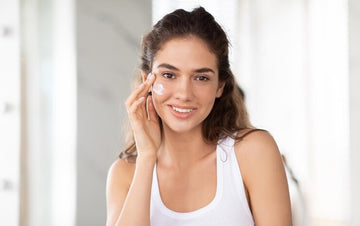




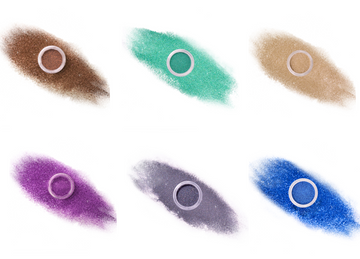
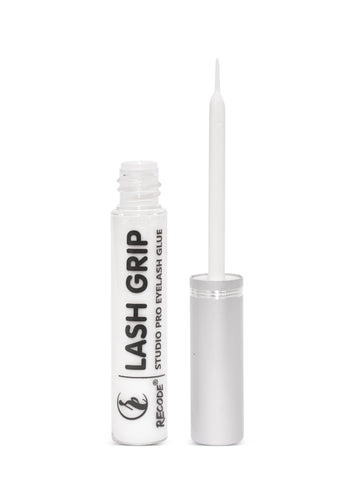
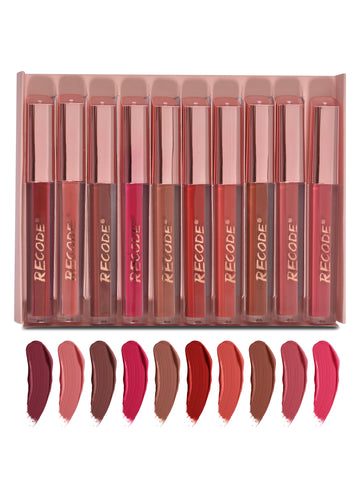


 E-Mail Us
E-Mail Us